43 isaac newton's 3 laws of motion worksheet
1. Newton's First Law of Motion (Inertia) An object at rest remains at rest, and an object in motion remains in motion at constant speed and in a straight line unless acted on by an unbalanced force. 2. Newton's Second Law of Motion (Force) The acceleration of an object depends on the mass of the object and the amount of force applied. 3. Live worksheets > English > Science > Forces >; 3 Laws of Motion. 3 Laws of Motion. Revise Isaac Newton's 3 laws of motion. ID: 1759732. Language: English. School subject: Science. Grade/level: 4. Age: 8-11. Main content: Forces.
Application of Newton's laws: Prescription Step 1: Divide a composite system into constituent systems each of which can be treated as a point mass. Step 2: Draw free body force diagrams for each point mass. Step 3: Introduce a coordinate system, the inertial frame, and write the equations of motion.

Isaac newton's 3 laws of motion worksheet
Science Worksheet: Isaac Newton's Laws of Motion. You May Also Like. ePacket: Science Grab Bag (Grs. 4-5) $3.99. By The Mailbox. ePacket: Exploring Ecosystems (Grs. 3-5) $2.99. By The Mailbox. View Newtons Laws Worksheet-.docx from SENIOR HIG 101 at Angeles University Foundation. Name: Period: Date: Newton's Laws of Motion Part I: Fill in the blanks below to state Newton's three laws Newton's Third Law of Motion - His Second Law of Motion adds that the force acting on an object is equal to the mass of that object times its acceleration. Newton's Third Law of Motion builds upon these first two, adding that for every action, there is an equal and opposite reaction.
Isaac newton's 3 laws of motion worksheet. Online Library Newton S Laws Of Motion Worksheet Scholastic New Zealand physical principles. Newton's laws of motion can also be integrated with other concepts that have been discussed previously in this text to solve problems of motion. Newton's Three Laws of Motion - Stanford University Newton's 2 Here are Sir Isaac Newton's three laws of motion. 3 Law 1 - An object moving in a straight line will continue moving in a straight line unless acted on by an outside force. Also, an object at rest will stay at rest unless acted on by an outside force. The word for this is inertia. 4 Law 2 - Force will cause a change in the motion of an object. From shooting basketballs to shooting stars, Newton's laws explain motion across the universe. Newton's Laws of Motion 1. An object in motion tends to stay in motion and an object at rest tends to stay at rest unless acted upon by an unbalanced force. 2. Force equals mass times acceleration (F = ma). 3. For every action there is an equal and opposite reaction.
Newton's Third Law of Motion For every action, there is an equal and opposite reaction. The statement means that in every interaction, there is a pair of forces acting on the two interacting objects. The size of the forces on the first object equals the size of the force on the second object. Learn about the facts that forces come in pairs. 1. Restate Newton's first law in terms of acceleration. 2. If the forces are balanced what is the resulting acceleration? 3. An object's resistance to change in motion is dependent solely on what quantity? 4. Inertia is the resistance to change in motion so inertia depends solely on what? 5. What is required to cause acceleration? 6. Isaac Newtons 3 Laws Of Motion. Displaying top 8 worksheets found for - Isaac Newtons 3 Laws Of Motion. Some of the worksheets for this concept are Newtons laws of motion, Newtons laws of motion work, Forces newtons laws of motion, Newtons laws of motion project, Newtons laws work, Newtons laws of motion, Section 12 3 newtons third law of motion and momentum, Newtons laws of motion. Isaac newton s 3 laws of motion sir isaac newton 1642 1727 was an english physicist and mathematician. Worksheet answer questions using. Force conversion student handout. An object that is not moving or is at at rest will stay at at rest and b. Inertia means resistance to change in motion. Newton s laws worksheet key i.
History of Newton's Laws of Motion . Sir Isaac Newton introduced the three laws of motion in 1687 in his book entitled "Philosophiae Naturalis Principia Mathematica" (or simply "The Principia"). The same book also discussed the theory of gravity. This one volume described the main rules still used in classical mechanics today. Newton's first law of motion worksheet. Examining what it takes to get an object to stop this quiz and corresponding worksheet will help you gauge your knowledge of the properties of newton s first law of. Newton s first law of motion explains that objects in motion stay in motion. ... Newton S Three Laws Of Motion Homework Newtons Third Law Of ... 209. $1.00. PDF. This graphic organizer is a great tool for students to organize their notes over Isaac Newton and his three laws of motion. This is a great tool to use to introduce the topic or review it at the end and makes for a quick and easy formative assessment. Students can glue this into their science note. provided for each section.Introduces Sir Isaac Newton and his laws of motion, with examples of how Newton's laws explain the movements of everyday objects. Describes some of Newton's scientific discoveries and accomplishments, and explores how Newton's laws of motion affected the development of flight.The Practice of
Newton's 3 Laws of Motion - Information and photographs explaining Newton's 3 Laws of Motion.This set includes:short bio card on Isaac Newton3 information cards (1 for each law)3 formula cards (1 for each law)3 information cards (force, mass, acceleration)Each of the 3 laws include the following:4 p
NEWTON'S THIRD LAW OF MOTION 13. 14. 15. 16. Newton's third law of motion is also known as the LAW OF Newton's third law sa that every time there is an in size and acts in the Newton's third law states that forces must ALWAYS cccur in Listed below are ACTION forces. Tell the REACTION force. b.
This Isaac Newton's 3 Laws of Motion Worksheet is suitable for 10th - Higher Ed. In this motion activity, students review Newton's Laws of Motion including terms such as inertia and net force. Students complete 11 matching, 7 fill in the blank, and 7 problems to solve.
Newton's law of motion worksheet. His work on mechanics would lay the foundation for modern physics and our understanding of the physical world in general today. Newton s laws of motion other contents. The three laws of motion were first put together in a book published by isaac newton in 1687.
Physical Science 1 Chapter 3 2 1 ST LAW OF MOTION Law of Inertia: • A object will remain at rest or in uniform motion in a straight line unless acted on by an external, unbalanced force . Wit h no forces acting on the ball, it continues to move along a straight line with constant speed .
Newton's Three Laws of Motion Every body continues in its state of rest, or of uniform motion in a straight line unless it is compelled to change that state by forces impressed upon it. The acceleration produced by a particular force acting on a body is directly proportional to the magnitude of the force and inversely proportional to the mass of the body.
Activity - Demonstrating Newton's Laws of Motion Burleson Version: April 2012 2 Summary: The goal of this activity is to provide an understanding of Newton's laws through a series of demonstration (3 total). Students are given the material and procedure and are encouraged to
Isaac Newton's 3 Laws of Motion Sir Isaac Newton (1642-1727) was an English physicist and mathematician. Before the age of 30 he formulated the laws of motion and invented calculus. Much of our modern science is based on Newton's Law One — Law of Inertia An object at rest will stay at rest unless acted on by an unbalance force. An object in motion will stay
Newton s law of motion worksheet.Some of the worksheets for this concept are newtons laws work review work energy fundamentals lesson plan newtons second law newtons first law of motion an object remains at rest or newtons laws work newtons laws of motion chapter 3 forces newtons law of motion newtons laws of motion.
Isaac Newton's 3 Laws of Motion Sir Isaac Newton (1642-1727) was an English physicist and mathematician. Before the age of 30 he formulated the laws of motion and invented calculus. Much of our modern science is based on Newton's Newton's Laws of Motion Law One - Law of Inertia An object at rest will stay at rest unless
Newton's laws of motion are three laws of classical mechanics that describe the relationship between the motion of an object and the forces acting on it. These laws can be paraphrased as follows: Law 1. A body continues in its state of rest, or in uniform motion in a straight line, unless acted upon by a force. Law 2.
Newton's Third Law of Motion - His Second Law of Motion adds that the force acting on an object is equal to the mass of that object times its acceleration. Newton's Third Law of Motion builds upon these first two, adding that for every action, there is an equal and opposite reaction.
View Newtons Laws Worksheet-.docx from SENIOR HIG 101 at Angeles University Foundation. Name: Period: Date: Newton's Laws of Motion Part I: Fill in the blanks below to state Newton's three laws
Science Worksheet: Isaac Newton's Laws of Motion. You May Also Like. ePacket: Science Grab Bag (Grs. 4-5) $3.99. By The Mailbox. ePacket: Exploring Ecosystems (Grs. 3-5) $2.99. By The Mailbox.
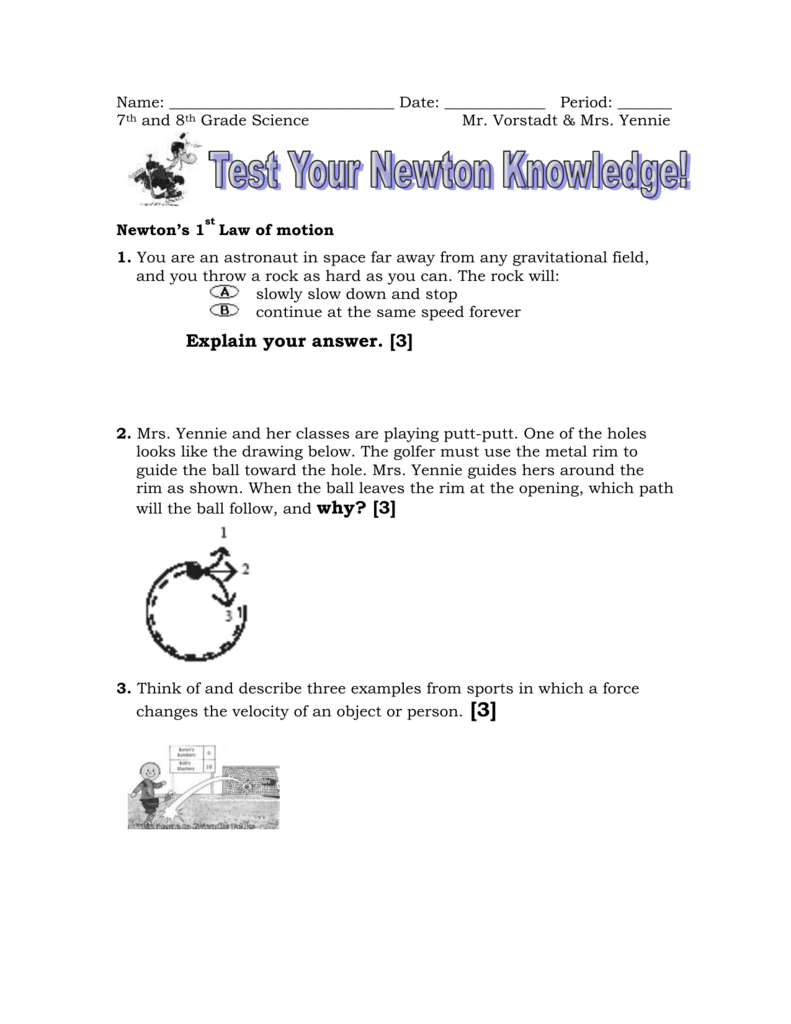
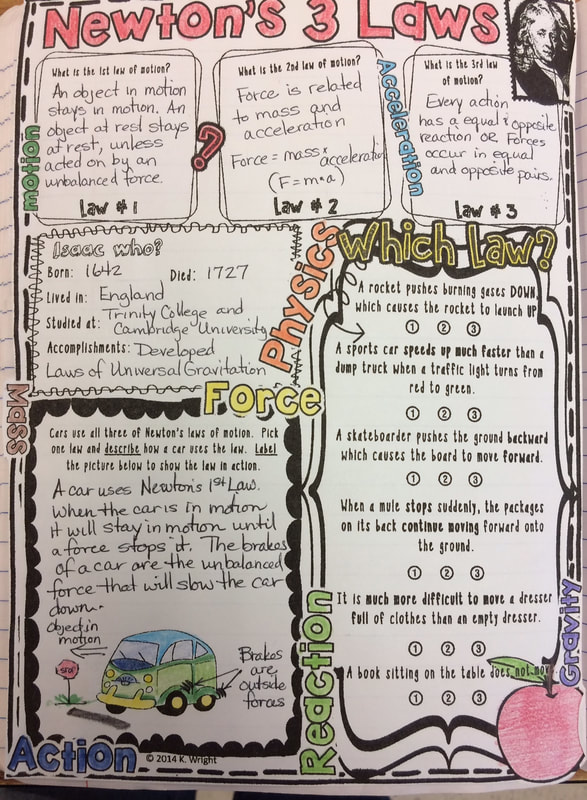

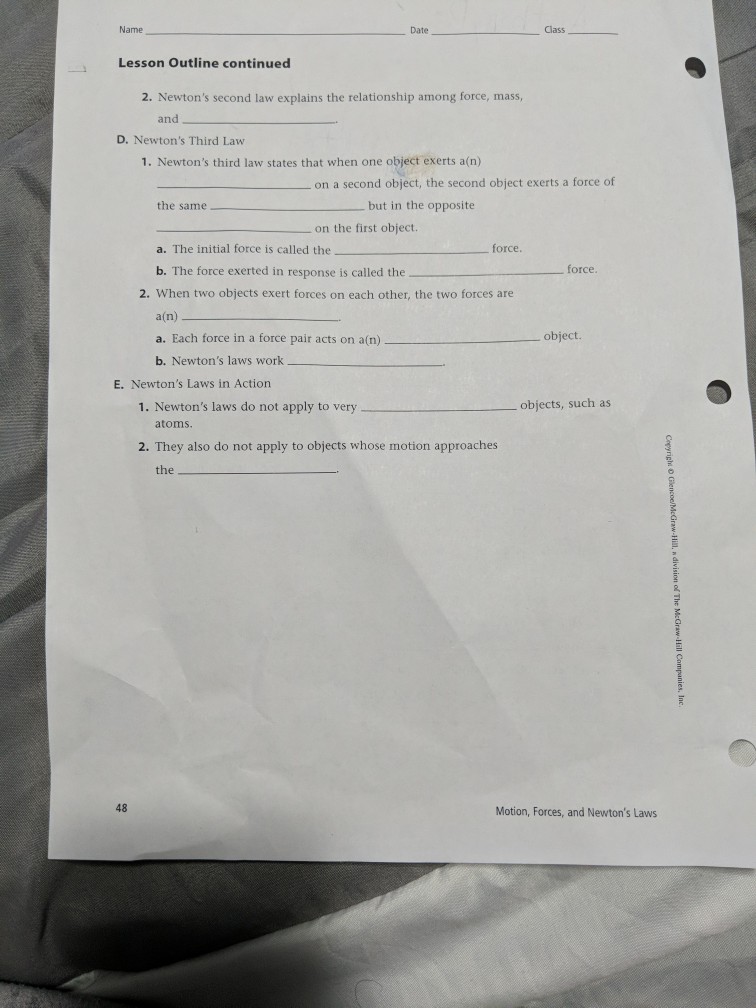

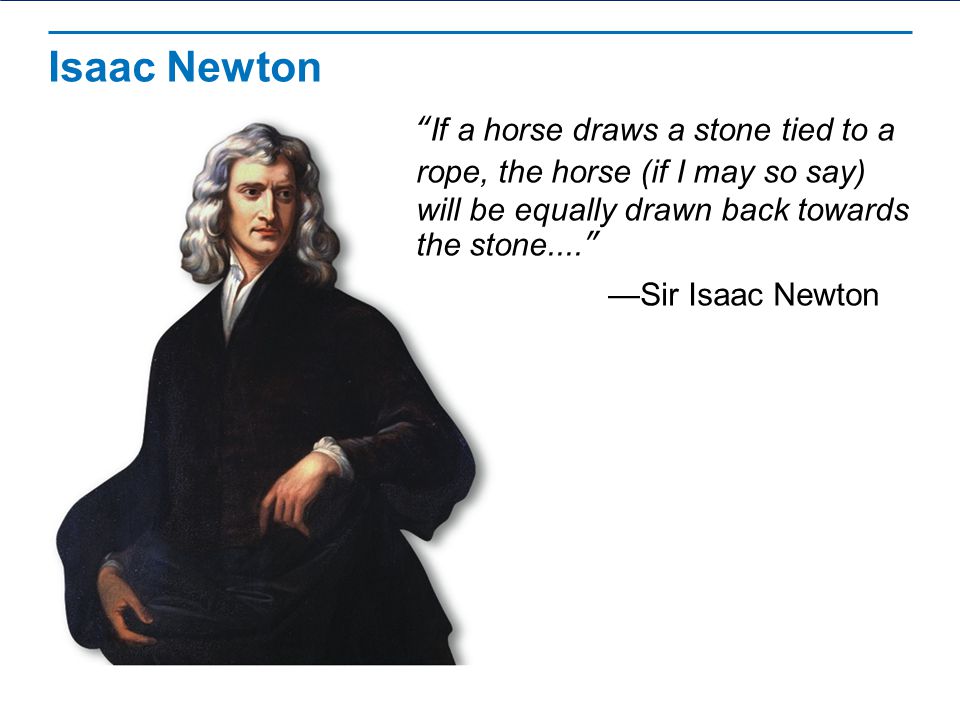

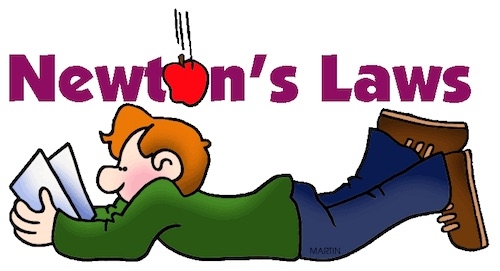


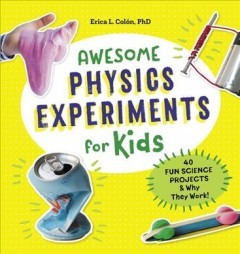










/newton-s-cradle-with-one-ball-falling-to-group-138077289-5a314e26c7822d0037ff0932.jpg)



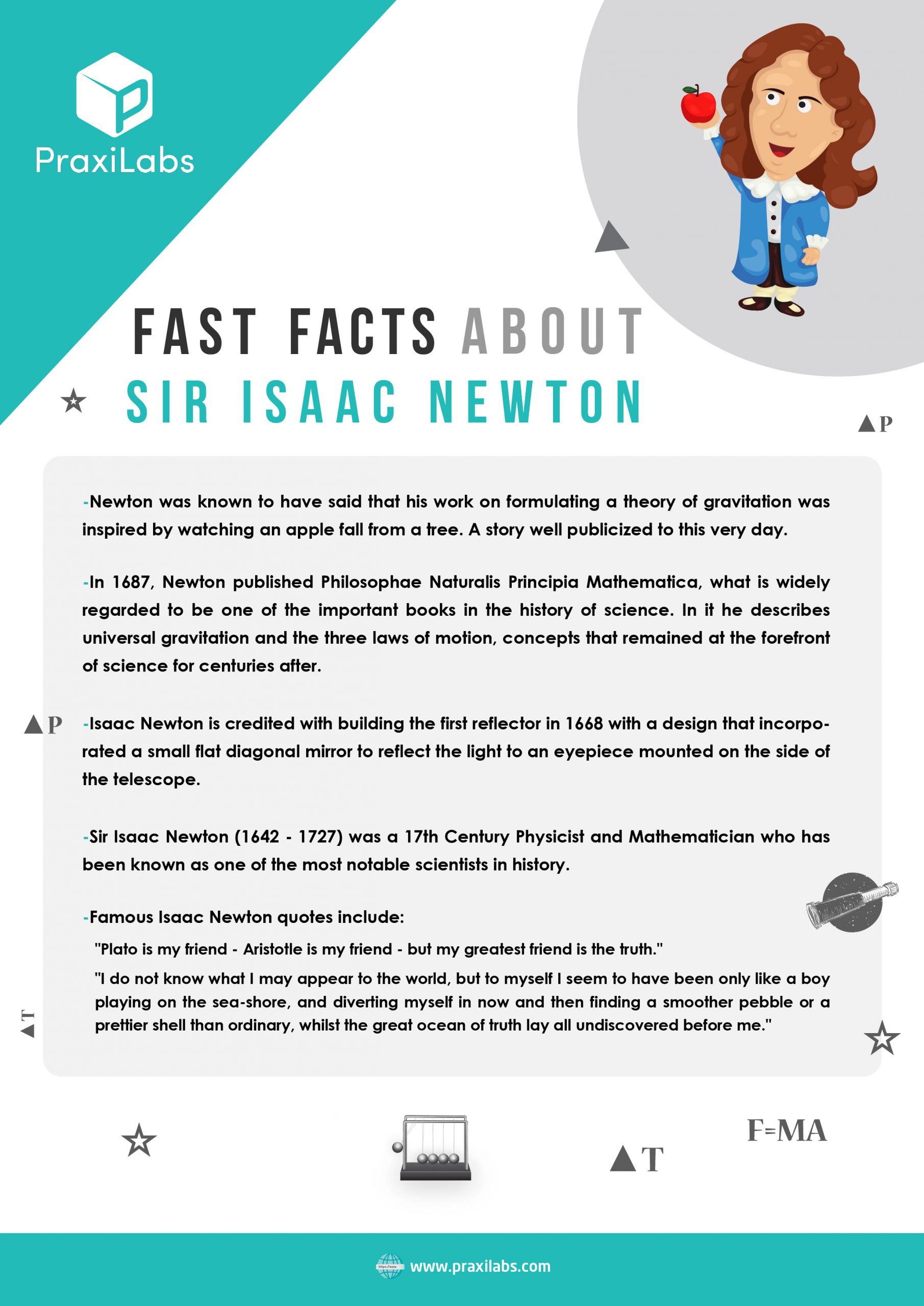






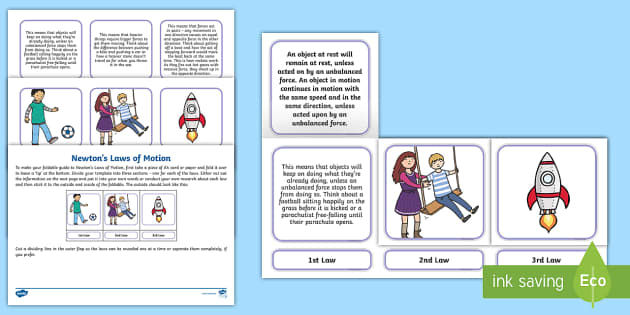

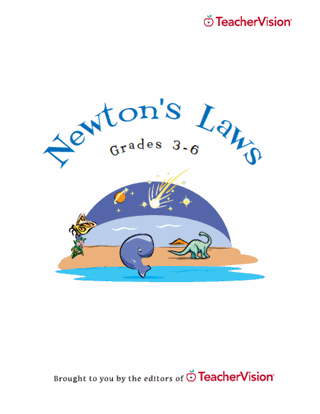

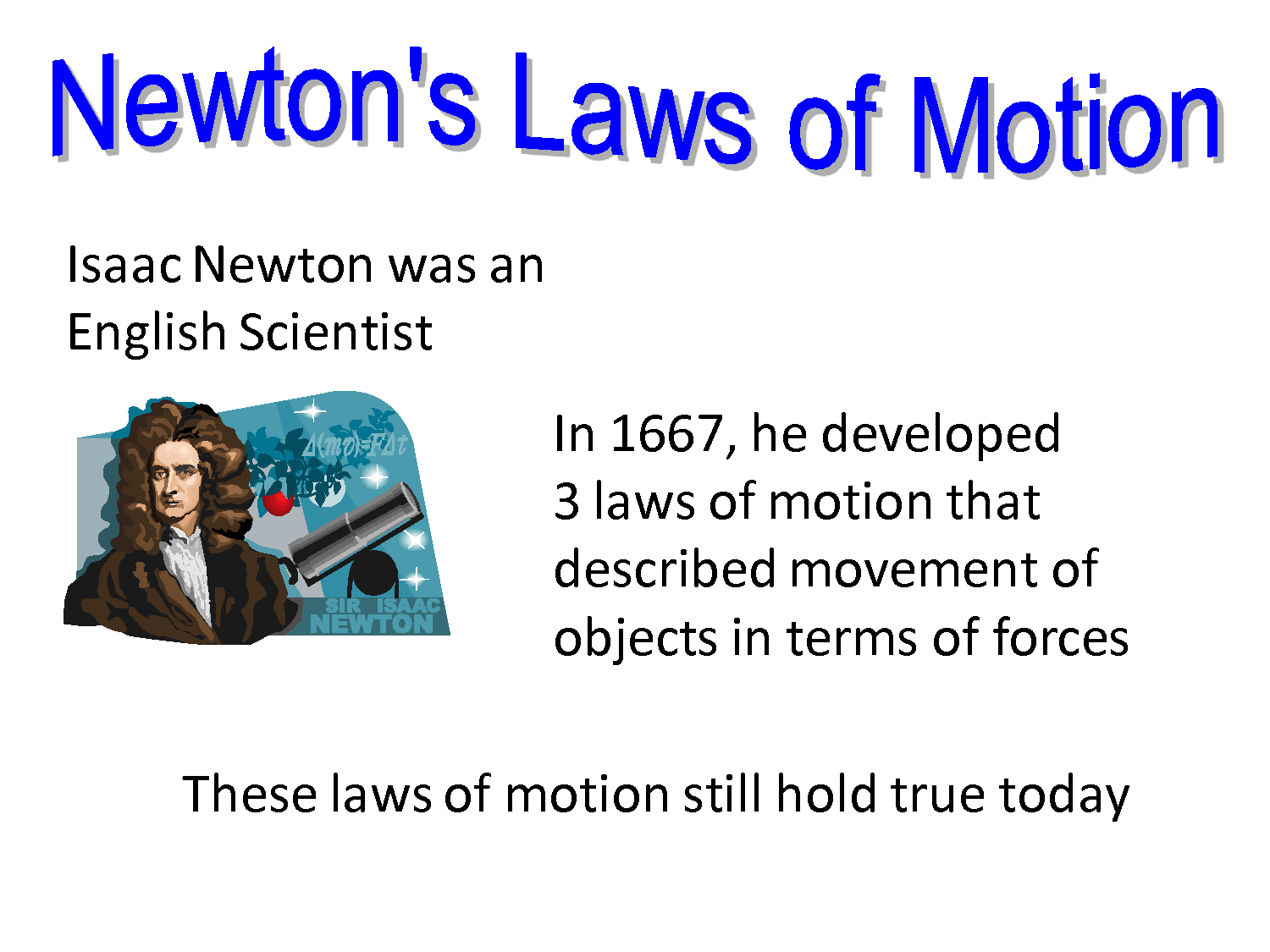
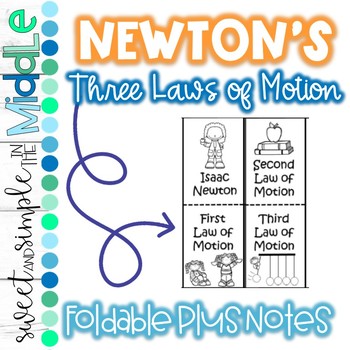
0 Response to "43 isaac newton's 3 laws of motion worksheet"
Post a Comment